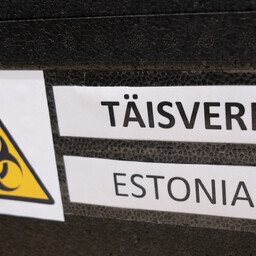Mortality is very high in cases of massive blood loss. PERH doctors now use whole blood to save patients' lives. Whole blood is blood that comes directly from a donor. Only white blood cells are removed because they can be harmful to the patient.
PERH uses RhD-positive group 0 whole blood. It is suitable for all people in life-threatening situations. Whole blood is a first aid measure used only in very severe cases.
Previously, blood transfusions used separate blood components, such as red blood cells and platelets. Now medicine has returned to the use of whole blood. Today, white blood cells are removed from whole blood, and it is checked for safety.
PERH doctors use only RhD-positive group 0 whole blood. Before use, it is checked whether it is also suitable for people with other blood groups. This ensures that the blood is safe for everyone.
Whole blood is collected only from male donors to avoid antibodies found in female donors' blood. All donors must undergo an antibody test. If the titer is too high, the blood is used only as components.
The introduction of whole blood at PERH took time. The first trial was conducted with 50 patients. No one was harmed, so whole blood can now be used safely.
Whole blood is rarely used, only in very severe cases. PERH has about 10–15 such patients per month. Whole blood is a first aid measure used in ambulances or hospitals.
Whole blood is stored in a refrigerator for 21 days. After that, blood components suitable for the patient's blood group are used. Whole blood helps the patient survive the first critical moment.
In Europe, whole blood is still rarely used, but PERH is a pioneer in its use. Estonia's donor blood reserves are good in peacetime, but they may run short in a crisis. Whole blood is intended for the treatment of life-threatening bleeding in peacetime.

